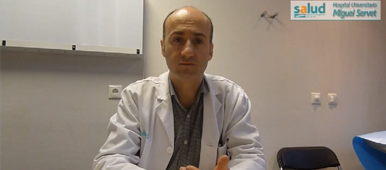Article of the week: Nomogram helps the preoperative prediction of early biochemical recurrence after radical prostatectomy
Every week the Editor-in-Chief selects the Article of the Week from the current issue of BJUI. The abstract is reproduced below and you can click on the button to read the full article, which is freely available to all readers for at least 30 days from the time of this post.
In addition to the article itself, there is an accompanying editorial written by a prominent member of the urological community. This blog is intended to provoke comment and discussion and we invite you to use the comment tools at the bottom of each post to join the conversation.
Finally, the third post under the Article of the Week heading on the homepage will consist of additional material or media. This week we feature a video of Ángel Borque discussing his paper.
If you only have time to read one article this week, it should be this one.
Genetic predisposition to early recurrence in clinically localized prostate cancer
Ángel Borque, Jokin del Amo†, Luis M. Esteban*, Elisabet Ars§, Carlos Hernández**, Jacques Planas¶, Antonio Arruza††, Roberto Llarena‡, Joan Palou§, Felipe Herranz**, Carles X. Raventós¶, Diego Tejedor†, Marta Artieda†, Laureano Simon†, Antonio Martínez†, Elena Carceller, Miguel Suárez, Marta Allué¶, Gerardo Sanz* and Juan Morote¶
‘Miguel Servet’ University Hospital, *University of Zaragoza, Zaragoza, Spain, †Progenika Biopharma S.A., ‡University Hospital of Cruces, Bilbao, §Puigvert Foundation, ¶‘Vall d’Hebron’ University Hospital, Barcelona, **‘Gregorio Marañón’ University Hospital, Madrid, and ††Hospital of Txagorritxu, Vitoria, Spain
OBJECTIVES
• To evaluate genetic susceptibility to early biochemical recurrence (EBCR) after radical prostatectomy (RP), as a prognostic factor for early systemic dissemination.
• To build a preoperative nomogram to predict EBCR combining genetic and clinicopathological factors.
PATIENTS AND METHODS
• We evaluated 670 patients from six University Hospitals who underwent RP for clinically localized prostate cancer (PCa), and were followed-up for at least 5 years or until biochemical recurrence.
• EBCR was defined as a level prostate-specific antigen >0.4 ng/mL within 1 year of RP; preoperative variables studied were: age, prostate-specific antigen, clinical stage, biopsy Gleason score, and the genotype of 83 PCa-related single nucleotide polymorphisms (SNPs).
• Univariate allele association tests and multivariate logistic regression were used to generate predictive models for EBCR, with clinicopathological factors and adding SNPs.
• We internally validated the models by bootstrapping and compared their accuracy using the area under the curve (AUC), net reclassification improvement, integrated discrimination improvement, calibration plots and Vickers’ decision curves.
RESULTS
• Four common SNPs at KLK3, KLK2, SULT1A1 and BGLAP genes were independently associated with EBCR.
• A significant increase in AUC was observed when SNPs were added to the model: AUC (95% confidence interval) 0.728 (0.674–0.784) vs 0.763 (0.708–0.817).
• Net reclassification improvement showed a significant increase in probability for events of 60.7% and a decrease for non-events of 63.5%.
• Integrated discrimination improvement and decision curves confirmed the superiority of the new model.
CONCLUSIONS
• Four SNPs associated with EBCR significantly improved the accuracy of clinicopathological factors.
• We present a nomogram for preoperative prediction of EBCR after RP.



